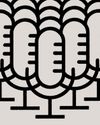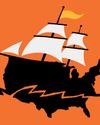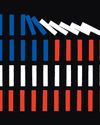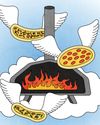Not long ago, I stopped by the Morgan Library, in Manhattan, to pay a visit to the Gutenberg Bible on display within a cube of glass in the Morgan’s towering East Room. Gutenberg Bibles are among the rarest of printed books—about 50 copies are scattered around the world. At the time of their production, in Mainz in the 1450s, Gutenberg Bibles were of course the most common printed books—they were among the only ones. If a Gutenberg Bible were to come on the market today, it would sell for as much as $35 million, according to some estimates. But who knows? Sheikhs and oligarchs might launch a bidding war. The Morgan has three Gutenbergs. The copy on display was bought by J. P. Morgan in 1911 at Sotheby’s, which was acting for the family of a Wiltshire banker, who had bought it from the British bookseller Bernard Quaritch, who had bought it from the family of a Middlesex brewer, who had bought it from a member of the aristocratic Sykes family, who in 1824 had sold off his brother’s famed library in order to buy hunting dogs. The Sykes copy can be traced to a Scottish monk, antiquarian, and spy who lived in Germany in the late 18th century, and it is probably the copy that was lodged for centuries in the Augustinian monastery at Rebdorf.
Diese Geschichte stammt aus der January - February 2020-Ausgabe von The Atlantic.
Starten Sie Ihre 7-tägige kostenlose Testversion von Magzter GOLD, um auf Tausende kuratierte Premium-Storys sowie über 8.000 Zeitschriften und Zeitungen zuzugreifen.
Bereits Abonnent ? Anmelden
Diese Geschichte stammt aus der January - February 2020-Ausgabe von The Atlantic.
Starten Sie Ihre 7-tägige kostenlose Testversion von Magzter GOLD, um auf Tausende kuratierte Premium-Storys sowie über 8.000 Zeitschriften und Zeitungen zuzugreifen.
Bereits Abonnent? Anmelden

JOE ROGAN IS THE MAINSTREAM MEDIA NOW
What happens when the outsiders seize the microphone?

MARAUDING NATION
In Trumps second term, the U.S. could become a global bully.

BOLEY RIDES AGAIN
America’s oldest Black rodeo is back.

THE GENDER WAR IS HERE
What women learned in 2024

THE END OF DEMOCRATIC DELUSIONS
The Trump Reaction and what comes next

The Longevity Revolution
We need to radically rethink what it means to be old.

Bob Dylan's Carnival Act
His identity was a performance. His writing was sleight of hand. He bamboozled his own audience.

I'm a Pizza Sicko
My quest to make the perfect pie

What Happens When You Lose Your Country?
In 1893, a U.S.-backed coup destroyed Hawai'i's sovereign government. Some Hawaiians want their nation back.

The Fraudulent Science of Success
Business schools are in the grips of a scandal that threatens to undermine their most influential research-and the credibility of an entire field.